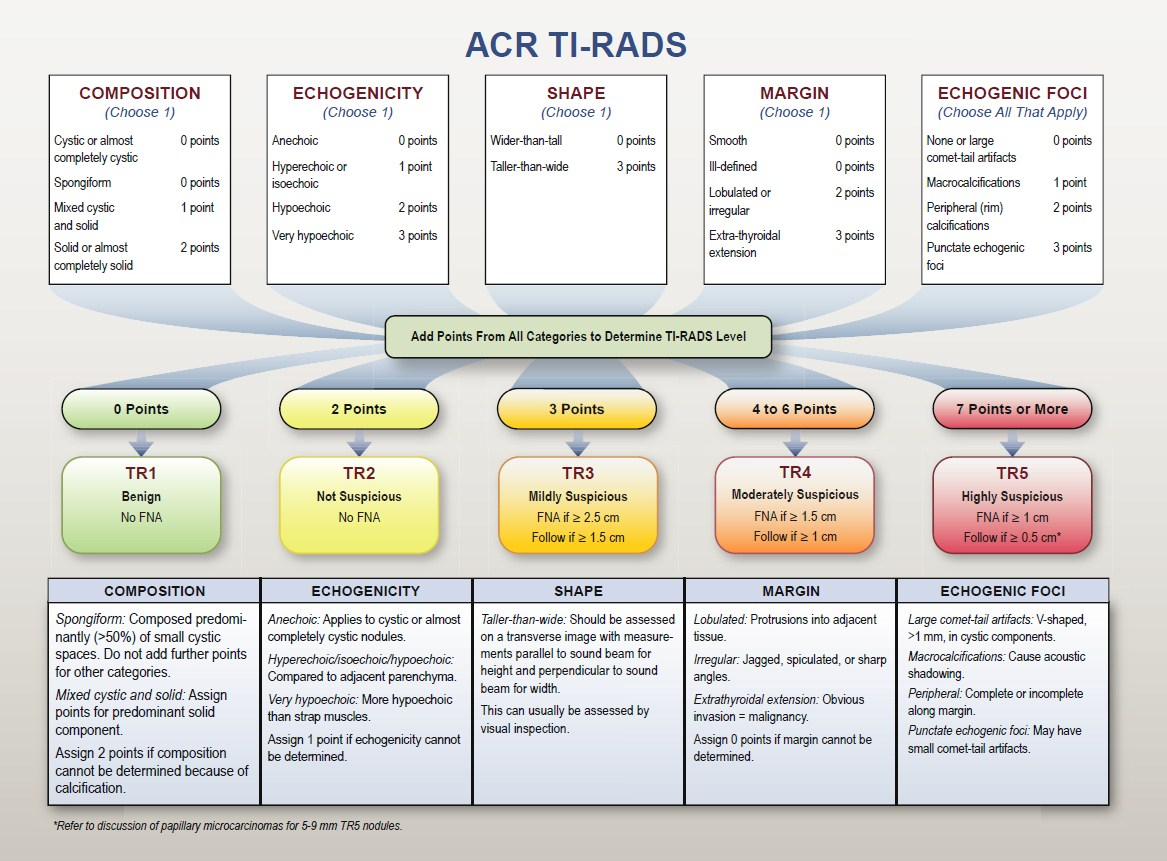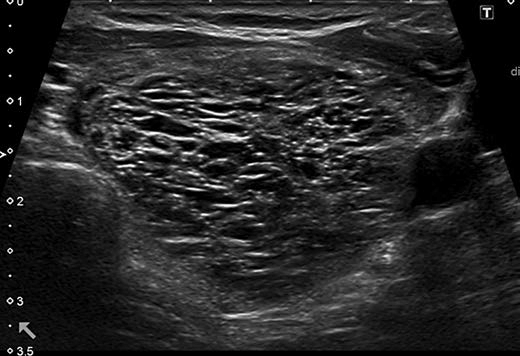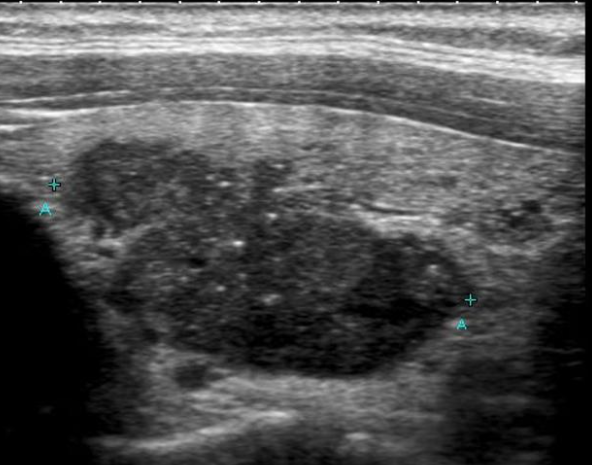Général
- TI-RADS pour la classification
- Types de Cancers
- Papillaire (80%) le moins agressif (fait des microcalcifications++)
- Folliculaire (15%)
- Medullaire (5%) (associé au MEN II)
- Anaplasique (1%) (croissance rapide)
- Lésions infiltratives / Mal délimitées
- Petits foyers de microcalcifications ponctués
TI-RADS

Suivi
- TR5 lesion, we recommend scans every year for up to 5 years
- For a TR4 lesion, scans should be done at 1, 2, 3, and 5 years
- For a TR3 lesion, follow-up imaging may be performed at 1, 3, and 5 years.
- Imaging can stop at 5 years if there is no change in size, as stability over that time span reliably indicates that a nodule has a benign behavior
Spongiforme

Solide isoechogène

Kyste Colloide
- Très Très fréquents
- Artéfacts en queue de comète

Carcinome Papillaire
- Le plus fréquent
- Les microcalcifications (aspect “snowstorm”) sont souvent en lien avec des carcinomes papillaires

Microcalcifications punctiformes
nodules tirads thyroidien carcinome TIRADS thyriude thyroïde thyroide TI-RADS THyroide nodule carcinome cancer thyroide